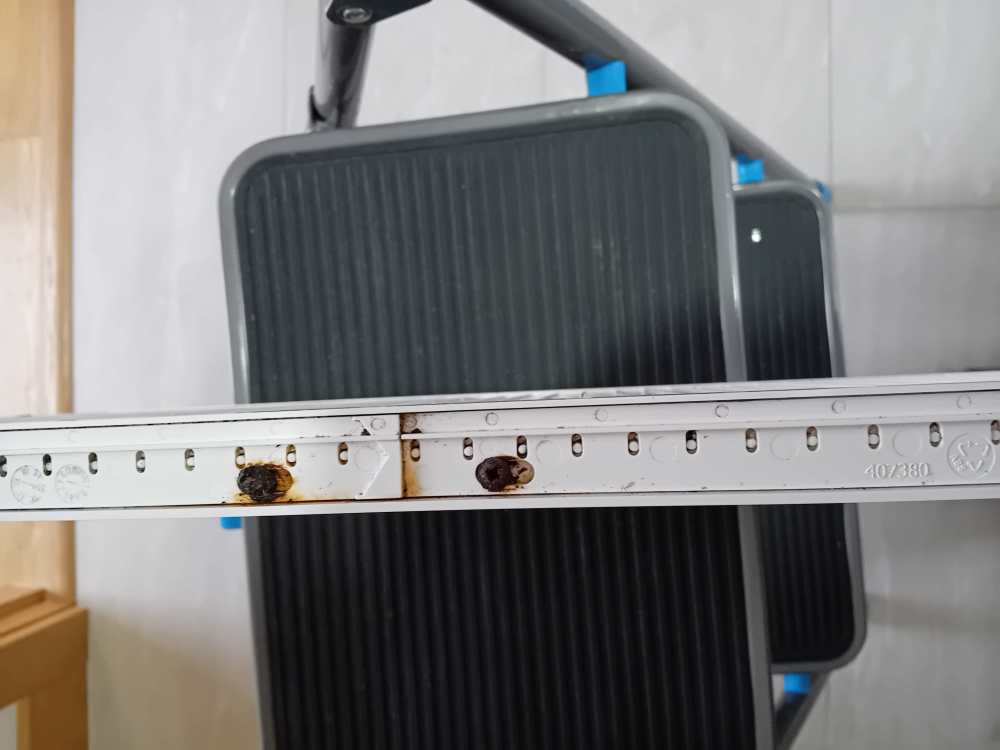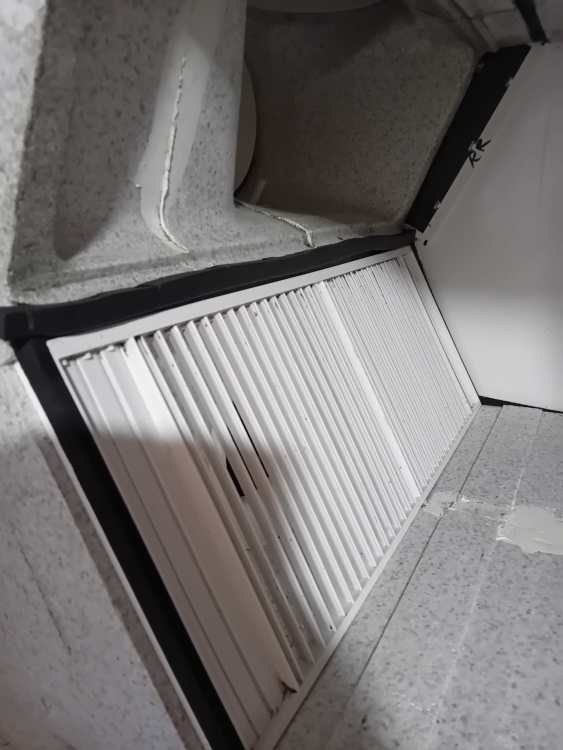-
Posts
3753 -
Joined
-
Last visited
-
Days Won
23
Stones last won the day on November 2 2023
Stones had the most liked content!
Personal Information
-
Location
Orkney
Recent Profile Visitors
26173 profile views
Stones's Achievements

Advanced Member (5/5)
1k
Reputation
-
At each end of the louvre assembly, the 3 slats you can see closed. The bypass forms when the solenoid closes the main louvres, and opens the 3 slats at each end. This prevents air cycling through the heat exchanger by guiding the airflow (with the aide of foam on each end of the heat exchange core) around the heat exchange core.
-

Mvhr funny noises and dripping
Stones replied to Pocster's topic in Mechanical Ventilation with Heat Recovery (MVHR)
Have to agree with this - I wonder if condensate has formed in the heat exchanger as it's pulling air from outside inside - if the extract air was cooler than the incoming air, and the incoming warm air was moisture laden, it would potentially condense on the intake side of the exchanger fins, then run down through the fins and collect where it has. -

Mvhr funny noises and dripping
Stones replied to Pocster's topic in Mechanical Ventilation with Heat Recovery (MVHR)
Same here, on the extract side, condensate drain blocked with biosnot, water built up until the fan started churning it. I -
Following on from this original topic, I have today just completed the annual main clean and service of my MVHR unit, now 8 years old. With our unit now located within the heated envelope of the house (rather than our cold loft as it was originally), the blocked condensate drain issue has not arisen again. There is always some evidence of mould growth on the extractor fan blades and extract fan chamber, but given this is a cold and damp / wet part of the unit, that is hardly surprising. I did however uncover 2 new issues: 1. The summer bypass, which consists of a plastic louvered fin assembly in a rectangular frame, opened and closed by a solenoid, was stuck in the closed position, i.e. on summer bypass. Closer inspection revealed the end of the solenoid which allows the unit to switch from heat recovery to summer bypass had broken off. On attempting to operate the louvres by hand, they were stuck solid. The screws securing the louvre assembly to the frame had corroded to such an extent that they prevented movement, which in turn caused the solenoid to break. The screws were so far gone that they dissolved on contact with a screwdriver. With the gentle persuasion of a mallet, I was able to tap open the louvre assembly to the heat recovery position. This means that I now have no summer bypass as there is no means to close the louvres. Not an urgent problem given the time of year, but something I will have to think about getting a replacement part for. Top tip therefore, lubricate the screws to try and slow / prevent corrosion. 2. Eight years of removing and re-inserting the core has torn / destroyed one of the seals (pictured hanging). Fortunately, I had some neoprene adhesive backed tape which I used to replace. Other than that, (and a previous fan bearing replacement) the unit is still going strong.
-
Indeed. Storage is of course measured in kWh.
-
Sort of. I think this is the real plan: https://www.telegraph.co.uk/business/2024/07/11/chinese-electric-cars-to-power-your-home-in-octopus-deal/#:~:text=A Chinese electric car maker,parked in their driveway... You can just imagine how the conversation went - Minister, if we prohibit the sale of ICE and force everyone to buy electric cars and we tell people to plug them in to get a 'discount' on their electricity bills, that gives us 33 million x 60 kWh of storage, which is nearly 2000 GWh of storage, which gives us 40 days of energy security even if we generate nothing for a few days. And the best part is, it won't cost us a thing, the public will pay without even realising. Even better we'll finally be able to introduce road pricing and increase revenue from that. Minister, this will transform our country, and you'll go down in history with a legacy few will ever surpass. Whilst there are obvious flaws to such a plan, you could see how a politician would get on board with such a vision. Nothing wrong of course with the idea of using your car as a power bank. Whether its better for the grid vs distributed storage at local / household level is a different question.
-
I'd also suggest comfort comes into this, and what type of heat you want. How an A2A delivers vs an A2W via UFH. I personally dislike warm air being blown around by an A2A, but when on holiday, appreciate the cool breeze of aircon. Heat delivered via UFH from our A2W gives a nice steady even temperature in house (with the added benefit A2W provides my DHW needs as well). But the cooling is less effective as it takes longer (albeit very pleasant when up (down?) to temperature. I think A2A are fantastic in large rooms / open spaces, less so in small(er) rooms. Like everything else, there are trade offs, and individual lifestyle requirements, and house location / design all play a part.
-
If memory serves, the original Passivhaus heating standard was designed so that all of the additional heat requirement could be delivered via a ventilation system (resistive heater). I know someone here who designed specifically to Passivhaus accreditation level, but still requires additional heat on certain days. Average solar gain for example is all very well, but rarely do you get the gain evenly spread. When I was looking at it for our house (2016), I looked at a range of options and heat requirement levels. The conclusion was that for both heat and DHW requirement, if the requirement was below 2500kWh annually for each, you would over a 10 year time frame be better off using straight forward (and inexpensive) resistive heaters. Above that level of requirement, the figures stacked ever more favourably in the direction of a heat pump. Energy prices have of course significantly changed since, so the cut of kWh requirement point will have changed.
-

Replace MVHR every 10 years?
Stones replied to TheMitchells's topic in Mechanical Ventilation with Heat Recovery (MVHR)
@Steve W Appreciate this relates to fans in a Vent Axia, bit hopefully give you the push to try bearing replacement. -
Would you mind sharing how much the course cost you, and any registration fees you need to pay?
-
Although I imagine the challenge given the postage stamp sized gardens is where would the ground pipes go. As you rightly point out a borehole would solve this, but how many GSHPS can a borehole support - presumably as you also say, local geology dependant
-
We went out of interest to have a look at a new development outside Inverness (Tormagrain). No heat pumps, all gas. When I questioned this, they said they had been refused permission for heat pumps, on the grounds of noise - apparently the combined effect in the house layout pattern would be over 100db. The only way they could have a heat pump based system was to install a communal one (think large supermarket or warehouse size provision) and locate it away from the houses. High overhead cost, (albeit not insurmountable) to manage that - invoicing etc, and lack of support to maintain and service such units/systems apparently.
-

Small water heater discharge point termination (post tundish)
Stones replied to Stones's topic in Boilers & Hot Water Tanks
Thanks all. -

Small water heater discharge point termination (post tundish)
Stones replied to Stones's topic in Boilers & Hot Water Tanks
Do you happen to have anything in writing from the course confirming that?







